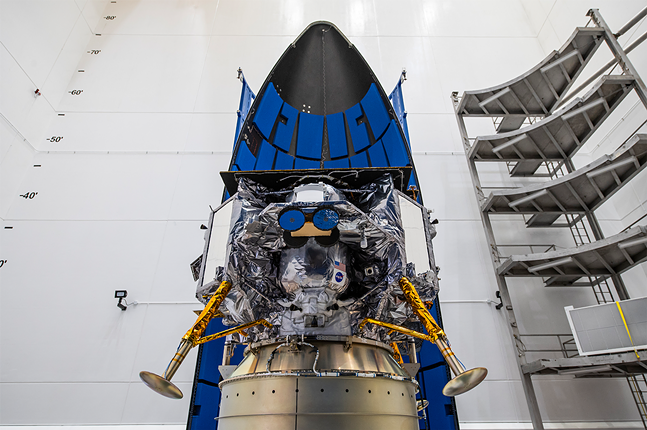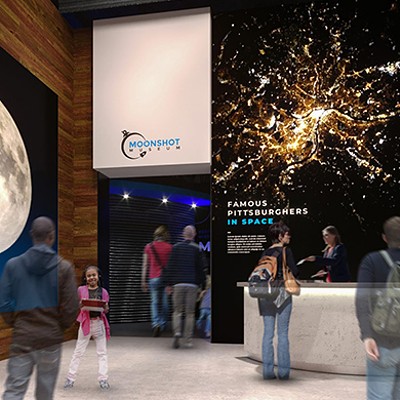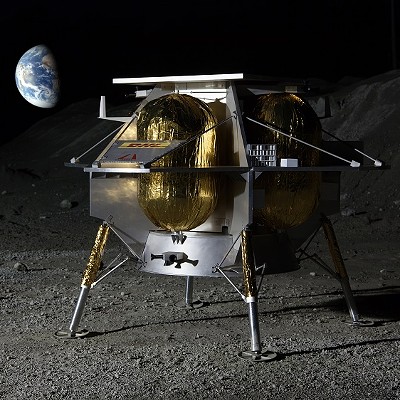
Astrobotic’s Peregrine Lunar Lander left Earth via United Launch Alliance’s Vulcan rocket from Cape Canaveral, Florida. Once the rocket left Earth’s atmosphere, Peregrine separated from Vulcan and began its solo journey to the moon. Shortly after, Astrobotic released a series of statements about a suspected propulsion system anomaly.
“Unfortunately, it appears the failure within the propulsion system is causing a critical loss of propellant,” the company said. “The team is working to try and stabilize this loss, but given the situation, we have prioritized maximizing the science and data we can capture.”
An improvised maneuver reoriented Peregrine’s solar array, allowing the company to fully charge the spacecraft’s battery. Astrobotic announced that it is using Peregrine’s existing power to perform as many payload and spacecraft operations as possible. Updates about Peregrine Mission One are ongoing as Astrobotic assesses alternative mission profiles.
Whether a success or not, this mission marks the beginning of a new era for the commercial lunar industry. NASA has partnered with Astrobotic as part of its Commercial Lunar Payload Services (CLPS) initiative. The CLPS program pays U.S. companies to create lunar delivery services that will transport NASA payloads to the moon at an accelerated rate. This will allow NASA to investigate the moon’s surface, preparing for future human missions as part of the agency’s Artemis program.
Joel Kearns, deputy associate administrator for Exploration, Science Mission Directorate at NASA Headquarters explained the importance of NASA leveraging the American space industry at a press teleconference on Jan. 5.
“We think this is a great approach to leverage entrepreneurship and innovation in the American industrial base,” Kearns said. “We think that it’s going to allow us to do more frequent, more cost effective, and more rapidly accomplished trips to the lunar surface to prepare for Artemis.”
Kearns believes the CLPS initiative will eventually lead to a solid group of service providers, like Astrobotic, that will help build a larger lunar economy.
“We really are committed to this idea of buying a service from industry instead of doing it ourselves,” he said. “We think it’s going to help build a group of service providers that can do that, not just for NASA but others in the United States and the world.”
In 2018, Astrobotic secured a contract with NASA, now valued at $108 million. Peregrine Mission One carries 20 payloads from various governments, universities, and companies, five of which are from NASA.
John Thornton, CEO of Astrobotic, says this is a moment 16 years in the making, but it’s only the beginning for the commercial lunar industry in Pennsylvania.
“When we started in Pittsburgh, the idea of building a space company, much less one to go to the moon, was completely foreign and alien,” Thornton said at the press teleconference. “Folks certainly, and literally, laughed at the concept. But 16 years later, through a lot of hard work and a lot of dedication, and just enough people believing in us along the way, here we are on the launch pad.”
Founded in 2007, Astrobotic is an employee-owned space company located on Pittsburgh's North Side. Thornton knows Pittsburgh is not a traditional space region but sees this mission as an accomplishment for the entire community.
“The mission is a representation that if Pittsburgh can land on the moon, Pittsburgh can do anything,” he said.
If Peregrine can successfully reach the lunar surface, it will land next to the Gruithuisen Domes. Scientists believe this landing site may contain evidence of water on the moon. NASA is set to conduct various experiments, such as finding water molecules, measuring radiation levels, and evaluating the lunar exosphere.
A wide range of unique mementos also travel on Peregrine Mission One. Some of the items set to reach the moon next month are a physical bitcoin, the DNA of “Star Trek” creator Gene Roddenberry, a piece of Mount Everest, and a Kennywood amusement park token.
Even if Astrobotic’s Peregrine Mission One is unsuccessful, it will not be the last American mission to the moon.
“It’s a really big challenge and we recognize that, eyes wide open,” Thornton said. “I think the way to think about it is that this is one of a series of lander missions going back to the surface of the moon. CLPS has awarded around 10 missions to go back to the surface, and this is just one of those missions.”


















